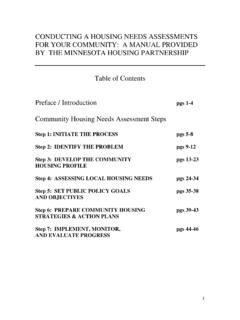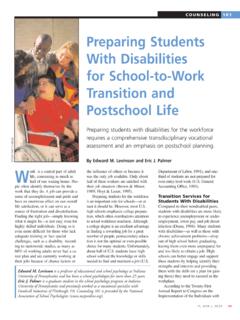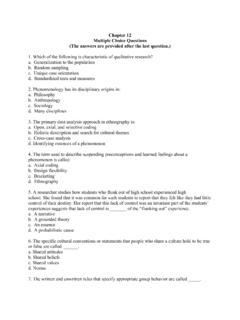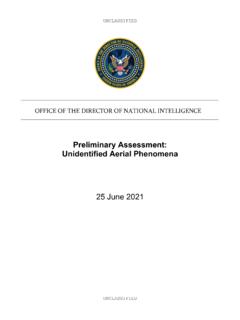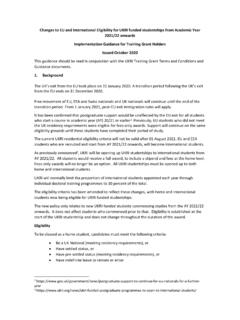Transcription of CONDUCTING A HOUSING NEEDS ASSESSMENTS FOR YOUR …
1 1 CONDUCTING A HOUSING NEEDS ASSESSMENTS FOR YOUR COMMUNITY: A MANUAL PROVIDED BY THE MINNESOTA HOUSING PARTNERSHIP Table of Contents Preface / Introduction pgs 1-4 Community HOUSING NEEDS Assessment Steps Step 1: INITIATE THE PROCESS pgs 5-8 Step 2: IDENTIFY THE PROBLEM pgs 9-12 Step 3: DEVELOP THE COMMUNITY pgs 13-23 HOUSING PROFILE Step 4: ASSESSING LOCAL HOUSING NEEDS pgs 24-34 Step 5: SET PUBLIC POLICY GOALS pgs 35-38 AND OBJECTIVES Step 6: PREPARE COMMUNITY HOUSING pgs 39-43 STRATEGIES & ACTION PLANS Step 7: IMPLEMENT, MONITOR, pgs 44-46 AND EVALUATE PROGRESS 2 PREFACE Today, many communities across Greater Minnesota are challenged with CONDUCTING HOUSING NEEDS ASSESSMENTS , yet many of them lack the technical expertise to perform this task.
2 Minnesota HOUSING Partnership (MHP) designed this manual, with considerable influence and instruction from the American Association of HOUSING Educator s Guidebook, to help small, non-metropolitan communities meet the challenge of CONDUCTING their own community HOUSING NEEDS assessment. It was designed to be utilized by communities that depend on planning boards, HOUSING organizations, activists, and other volunteers to complete their local or regional HOUSING NEEDS ASSESSMENTS and strategies. INTRODUCTION The MHP Manual to CONDUCTING Community HOUSING NEEDS ASSESSMENTS was designed for individuals and organizations involved in HOUSING issues, particularly in towns or counties that do not employ professional HOUSING or planning staff.
3 Important potential users of this manual include the local planning board, HOUSING authority, nonprofit HOUSING sponsors, homeless assistance providers, special NEEDS group advocates, and community volunteers. Small communities would benefit from joint efforts with neighboring communities within the county or among member communities in a regional planning area. The manual s objectives are as follows: To outline a process for developing community HOUSING NEEDS ASSESSMENTS and strategies, and, Provide information resources for small, non-metropolitan communities to use in preparing their HOUSING NEEDS ASSESSMENTS and strategies A Community HOUSING NEEDS Assessment is labor intensive, time consuming, and logistically complicated to organize and manage, as it involves a considerable amount of data collection.
4 Fortunately, it does not necessarily require highly technical analyses, so tasks can be assigned to local community volunteers. Individuals involved need a firm understanding of what they hope to achieve and how they hope to achieve it (Shoemaker, 1987). This key to success lies in having a well-defined methodology and plan of attack. To start the job, prepare a large, three-ring binder with labeled dividers for various types of data. Data that exceeds more than two to four pages, may need to be condensed, focused, or summarized so that its information can be quickly grasped. Note that completing the Community HOUSING NEEDS Assessment process promptly may be especially important in smaller, non-metropolitan communities because the public s attention span or willingness to participate is limited.
5 More importantly, small, non-metropolitan communities are more vulnerable to sudden change. 3 COMMUNITY HOUSING NEEDS ASSESSMENT PROCESS The goal of a Community HOUSING NEEDS ASSESSMENTS is to help focus a community s efforts on its most critical local HOUSING problems. It is an in-depth HOUSING market analysis that carefully examines the area s supply and demand for HOUSING to determine existing and future NEEDS for HOUSING . It aims to: 1) let a community know exactly what its HOUSING NEEDS are; 2) aid officials in assigning priority to the HOUSING NEEDS identified; and 3) provide a necessary guide in developing appropriate HOUSING policies, programs, and strategies (Shoemaker, 1987).
6 The process of CONDUCTING a Community HOUSING NEEDS Assessment involves: 1) assessing current and projected HOUSING conditions; 2) setting goals; and 3) selecting appropriate program approaches to achieve those goals. ( , 1978; Committee for Economic Development, 1986; Luke et al., 1988). Each community must adapt this process to their unique HOUSING market circumstances. Communities should also base their priorities on the NEEDS identified by the assessment. OTHER POTENTIAL USES OF NEEDS ASSESSMENT ___ Basis for economic development efforts ___ Basis for new or amended HOUSING /community development legislation ___ Compliance with federal or state (legislative) requirements ___ Defining budget priorities (resource allocation) ___ Description of HOUSING situation/problems ___ Developing intervention strategies ___ Evaluation ___ Fund raising for local HOUSING efforts ___ HOUSING advocacy and community awareness ___ HOUSING database development ___ HOUSING information and referral ___ Planning for decision making 4 The Community HOUSING NEEDS Assessment process includes seven steps with associated tasks.
7 The steps may be completed in order or all at once, as the local situation, time, and volunteer labor allow. Step 1: INITIATE THE PROCESS Step 2: IDENTIFY THE PROBLEM Step 3: DEVELOP THE COMMUNITY HOUSING PROFILE Step 4: ASSESSING LOCAL HOUSING NEEDS Step 5: SET PUBLIC POLICY GOALS AND OBJECTIVES Step 6: PREPARE COMMUNITY HOUSING STRATEGIES & ACTION PLANS Step 7: IMPLEMENT, MONITOR, AND EVALUATE PROGRESS 5 STEP ONE: INITIATING THE PROCESS Develop an inclusive list of participants from which to select HOUSING Task Force members. Plan for community awareness and involvement via local media, HOUSING tours, and public hearings. Identify and commit resources to process.
8 6 LET S GET STARTED! Initiating the process of CONDUCTING a Community HOUSING NEEDS Assessment involves developing a HOUSING Task Force, holding public hearings, allocating resources, and most importantly, convincing the community that a HOUSING problem exists. THE HOUSING TASK FORCE The HOUSING Task Force should be comprised of people in a position to facilitate change in your community. This does not imply that the Task Force will be comprised of political figures in the community. It s equally important that the general public be encouraged to participate. Involvement of individuals with diverse backgrounds and a variety of skills will be critical to success of the task force.
9 Additionally, involving the public early in the process promotes community acceptance (Low Income HOUSING ..[LIHIS], July 1991). The HOUSING Task Force should be in place before any information regarding the Community HOUSING NEEDS ASSESSMENTS is released for public comment and hearings. While determining the appropriate individuals to involve in the task force, you should ask yourself Who will want to be involved? And Why? , How can they contribute? , and Who has influence over HOUSING in your community? The following gives a brief description of individuals and groups that should be invited to join the HOUSING Task Force. Suggested HOUSING Task Force Membership * Public officials.
10 Support form elected and appointed officials can be critical. Identify sympathetic public officials and bring them into the process as early as possible. Also, utilize their political power and influence as much as possible. * Public Interest Groups. They are often the first to recognize an emerging problem and bring it to the public for action. Identify interest groups in your community who are focused on HOUSING NEEDS , community development, social welfare, and advocacy. * Professionals. They can provide insight, expertise, and may be willing to offer their services. * Underdog Partisans. Special NEEDS groups are typically affected by the HOUSING problem and would make excellent advocates.
